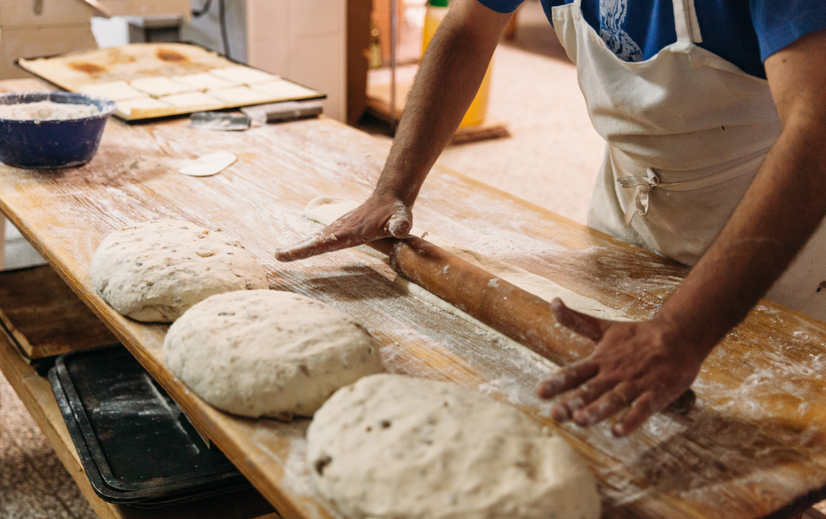Artisan bread making is a craft that combines tradition with innovation. One of the most exciting aspects of this craft is the use of unique ingredients that enhance the bread’s flavor, texture, and nutritional value. This article delves into some of the distinctive ingredients used in artisan bread making and how they contribute to creating extraordinary loaves.
Ancient Grains: Reviving Tradition
Ancient grains are returning in modern baking, celebrated for their rich flavors and health benefits.
Spelt: Spelt is an ancient grain with a slightly nutty flavor known for its high protein content. Spelt flour can be used entirely or blended with other flours to add depth and complexity to the bread’s taste.
Kamut: Kamut, also known as Khorasan wheat, is another ancient grain prized for its buttery flavor and chewy texture. It contains more protein and minerals than modern wheat, making it a nutritious addition to artisan bread.
Einkorn: Einkorn is one of the earliest forms of cultivated wheat. It has a sweet and nutty flavor with a slightly golden hue. Einkorn flour is highly digestible and adds a unique taste and texture to bread.
Seeds and Nuts: Adding Crunch and Nutrition
Incorporating seeds and nuts into bread enhances flavor and boosts nutritional value.
Flaxseeds: Flaxseeds are packed with omega-3 fatty acids, fiber, and antioxidants. They provide a subtle nutty flavor and a pleasant crunch when added to bread dough. They can be used whole or ground, depending on the desired texture.
Sunflower Seeds: Sunflower seeds add a mild, nutty flavor and a delightful crunch to bread. They are rich in vitamins and minerals, including vitamin E and magnesium. Sunflower seeds can be mixed into the dough or sprinkled on top for a decorative touch.
Walnuts: Walnuts bring a rich, earthy flavor to artisan bread. They are high in healthy fats, protein, and antioxidants. Chopped walnuts can be folded into the dough, creating a beautiful marbled effect and satisfying crunch.
Herbs and Spices: Infusing Flavor
Herbs and spices are essential for adding aromatic and flavorful notes to bread.
Rosemary: Rosemary is a fragrant herb that pairs wonderfully with bread. Its piney, citrus-like flavor enhances the taste of rustic loaves. Fresh or dried rosemary can be kneaded into the dough or used as a topping.
Thyme: Thyme has a subtle, earthy flavor with a hint of mint. It complements savory bread and adds an aromatic element. Like rosemary, thyme can be mixed into the dough or sprinkled on top before baking.
Caraway Seeds: Caraway seeds have a distinct, slightly peppery flavor with hints of anise. They are often used in rye bread, adding a unique taste that sets it apart from other types of bread. A small amount of caraway seeds goes a long way in flavoring the dough.
Fruits and Vegetables: Sweet and Savory Additions
Incorporating fruits and vegetables into bread introduces new flavors and textures.
Dried Fruit: Dried fruits like raisins, cranberries, and apricots add natural sweetness and chewiness to bread. They pair well with nuts and spices, creating a balanced and flavorful loaf. Soaking dried fruits before adding them to the dough can prevent them from drawing moisture away during baking.
Olives: Olives bring a salty, tangy flavor to bread, making them perfect for savory loaves. They can be chopped and mixed into the dough or used as a filling. Kalamata olives, in particular, are popular in Mediterranean-style breads.
Pumpkin Puree: Pumpkin puree adds moisture, color, and a subtle sweetness to bread. It is rich in vitamins and fiber, making it a healthy addition. Pumpkin bread can be enhanced with spices like cinnamon and nutmeg for a warm, autumnal flavor.
Specialty Flours: Elevating the Basics
Using specialty flours can transform the texture and flavor of bread, offering new dimensions to traditional recipes.
Rye Flour: Rye flour has a robust, slightly sour flavor and is a staple in many European breads. It creates a dense, hearty loaf with a distinctive taste. Rye flour can be used alone or blended with wheat flour for a more balanced flavor.
Buckwheat Flour: Buckwheat flour is gluten-free and has a rich, nutty flavor. It is often used in combination with other flours to create a unique texture and taste. Buckwheat adds a dark color and earthy flavor to bread, making it a favorite in artisan baking.
Chickpea Flour: Chickpea flour, or gram flour, is made from ground chickpeas. It has a slightly sweet, nutty flavor and is high in protein and fiber. Chickpea flour can be used to create gluten-free bread or added to wheat flour for extra nutrition and flavor.The world of artisan bread making is full of possibilities, thanks to the diverse range of unique ingredients available. Each ingredient brings something special to the table, from ancient grains and seeds to herbs, spices, and specialty flours. By exploring these options, bakers can create bread that is not only delicious but also rich in history and nutrition. For more information, contact a bakery like Klosterman Baking Company.
